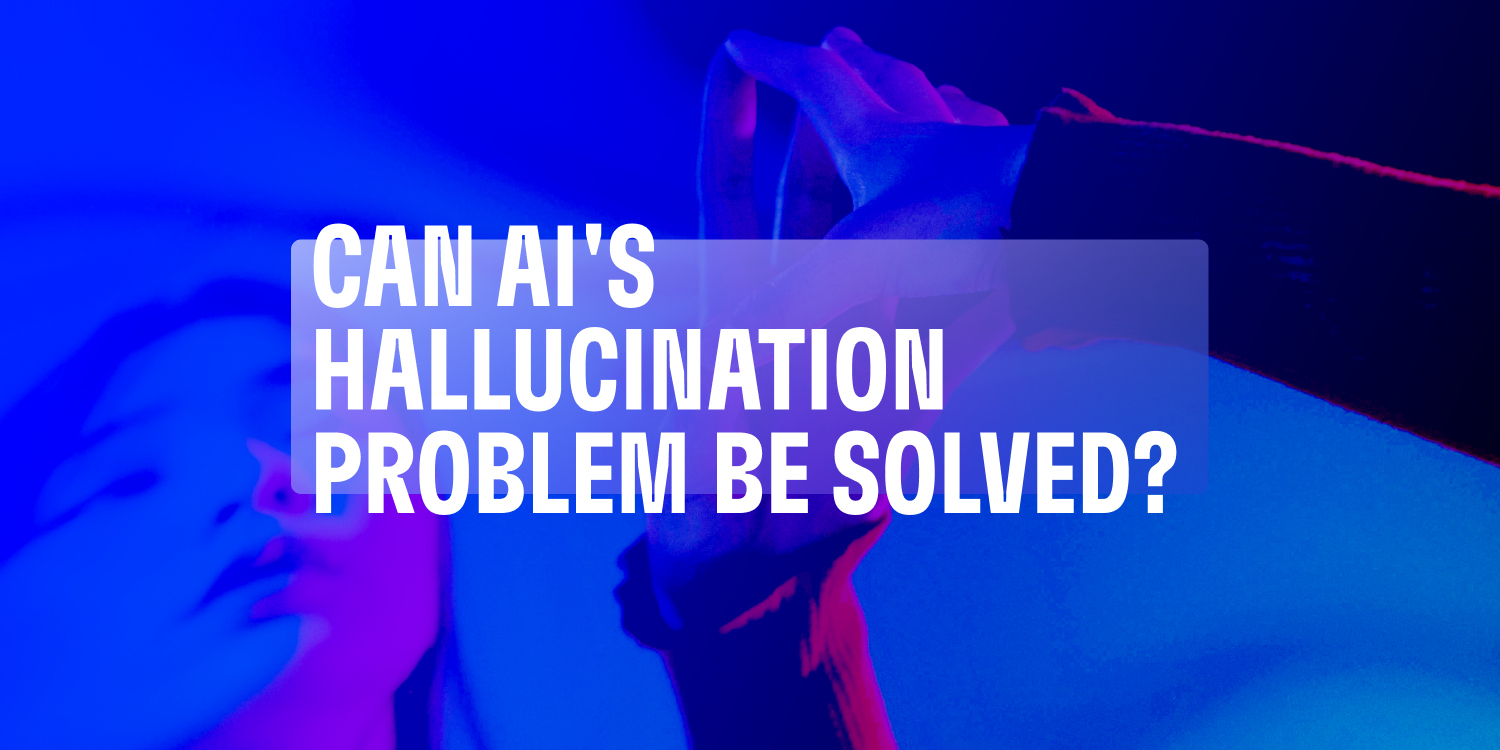
How Do Cleo Users Feel About AI?
How do Cleo users feel about AI? What are their concerns? What do they hope AI can help them accomplish? Hear more from our User Research team.
This is some text inside of a div block with Cleo CTA
CTASigning up takes 2 minutes. Scan this QR code to send the app to your phone.

Confident, yet inaccurate answers are seemingly part of the charm of LLMs. But how serious is the AI hallucination problem and will it ever be completely solved?

In the rapidly evolving world of artificial intelligence, few issues have garnered as much attention and concern as the phenomenon of AI "hallucinations."
As AI systems become increasingly sophisticated and ubiquitous, their propensity to generate confident yet inaccurate responses—often referred to as hallucinations—has become a major challenge for researchers and developers alike.
So, what exactly do we mean when we talk about AI hallucinations? Imagine an AI language model that has been trained on a big body of text data, from news articles and scientific papers to social media posts and online forums.
When prompted with a question or a statement, the model draws upon this training data to generate a response that it believes is most appropriate. However, sometimes, the model gets it wrong, producing content that is not grounded in reality or supported by its training data.
Hallucinations can take many forms, from minor factual inaccuracies to entirely fabricated narratives. For example, an AI chatbot might confidently assert that the moon landing took place in 1968 (it was actually 1969) or that the capital of France is London (it's Paris, of course). More troublingly, an AI system might generate an utterly fictitious news article or a made-up scientific study, complete with convincing details and citations.
Recently, during a press conference, Nvidia CEO Jensen Huang addressed the issue head-on. When asked about the company's approach to tackling AI hallucinations, Huang confidently asserted that such inaccuracies can be easily resolved by ensuring that AI-generated responses are thoroughly researched and vetted.
It's a bold claim but one that reflects a growing sentiment among AI experts that the hallucination problem is not insurmountable.
One proposed solution to hallucinations is to improve the quality and diversity of the data used to train AI models. The idea is simple: the more high-quality, reliable information an AI system is exposed to during training, the less likely it is to generate content that is inconsistent with reality.
But it's easier said than done. With the volume of data used to train AI models growing exponentially, ensuring its veracity and reliability is becoming increasingly daunting. Initiatives like Anthropic's Constitutional AI aim to address this by using carefully curated datasets and advanced techniques like "informatic amplification" to improve the quality and consistency of AI outputs.
Another approach is developing more sophisticated methods for identifying and filtering inaccurate or misleading content.
Imagine an AI fact-checker who can quickly and accurately distinguish between reliable and unreliable information, flagging potential hallucinations before they can spread. Researchers are already exploring techniques like anomaly detection and fact-checking algorithms to help make this a reality.
For example, the AllenAI system uses a combination of natural language processing and knowledge graphs to verify the accuracy of claims made in scientific papers.
But technical solutions alone won't solve the hallucination problem. There's also a growing recognition of the need for greater transparency and accountability in developing and deploying AI systems.
As these technologies become more deeply embedded in our social and economic fabric, we must establish clear guidelines and standards for their use.
_JELLY_LUISE_10201.jpg)
An instance demonstrating this transparency strategy in practice is the development of "model cards" by AI researchers at Google. These cards provide detailed information about the capabilities and limitations of AI models, including their performance on specific tasks, the data used to train them, and any known biases or weaknesses.
By making this information readily available to users and stakeholders, model cards help to promote transparency and foster a more nuanced understanding of the strengths and limitations of AI systems.
Researchers at Iris.ai, an Oslo-based startup, have unveiled a promising solution to reduce AI hallucinations to single-digit percentages drastically. The company has gained recognition for developing an AI engine adept at understanding scientific texts, which has proven effective in analyzing, categorizing, and summarizing large volumes of research data.
One notable application has been with the Finnish Food Authority, where the technology has cut down 75% of the workload for researchers engaged in urgent investigations, such as those related to avian flu.
However, the challenge of AI "hallucinations" – where AI systems generate misleading or nonsensical information – remains significant. Such inaccuracies can undermine trust and efficiency across various sectors, including research.
A survey indicated that only 22% of corporate R&D workers trust AI systems like ChatGPT, although 84% still rely on them for research assistance. To combat these issues, Iris.ai has adopted strict fact-checking procedures to enhance the accuracy and reliability of AI-generated information, striving to align AI responses more closely with those of human experts.
Despite these attempts, solving the issue of hallucinations continues to be a challenging obstacle. As AI models become more complex and opaque, it becomes increasingly difficult to identify and correct for inaccuracies and biases in their outputs. And as AI systems are deployed in ever more sensitive and high-stakes domains—from healthcare and finance to criminal justice and national security—the consequences of hallucinations can be severe and far-reaching. Cases like IBM Watson's ill-fated cancer treatment recommendations underscore the potential risks of relying too heavily on AI systems that are not fully understood or validated.
Solving the hallucination problem will require a sustained and collaborative effort from researchers, developers, policymakers, and other stakeholders. We need a combination of technical innovation, ethical reflection, and regulatory oversight to ensure that AI systems are developed and deployed responsibly and trustworthyly. Organizations like the Partnership on AI and the IEEE Global Initiative on Ethics of Autonomous and Intelligent Systems are working to establish best practices and guidelines for developing and using AI systems.
The challenge of AI hallucinations isn't just about building better technologies—it's about grappling with fundamental questions about the nature of truth, reality, and our relationship with machines. As we continue to push the boundaries of what's possible with artificial intelligence, we have an opportunity to build more reliable and trustworthy systems and deepen our understanding of ourselves and the world around us.
While Cleo hasn't solved for hallucinations completely, we do implement a system which makes sure that when it really matters, users are getting the most accurate answer possible.
To read more about our approach check out this article from our Head of Data Science, Benj Petit.

How do Cleo users feel about AI? What are their concerns? What do they hope AI can help them accomplish? Hear more from our User Research team.

Explore how AI money apps are shaping the future of finance 💸

ICYMI: Cleo's Senior Machine Learning PM, Kate Janssen dropped by the studios at 11:FS to chat AI + Fintech with some of London's biggest brains.

